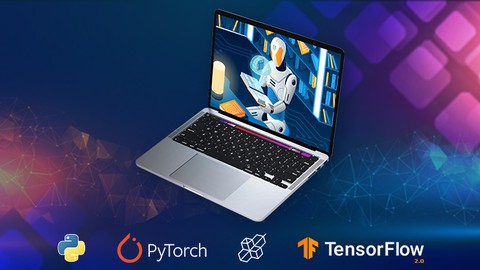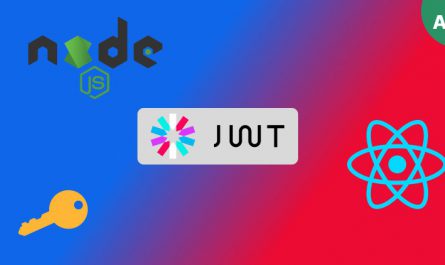
Description
Comprehensive Course Description:
Natural Language Processing (NLP), a subdivision of Artificial Intelligence (AI), is the ability of a computer to understand human language the way it’s spoken and written. Human language is typically referred to as natural language.
Humans also have different sensors. For instance, ears perform the function of hearing, and eyes perform the function of seeing. Similarly, computers have programs for reading and microphones for collecting audio. Just as the human brain processes an input, a computer program processes a specific input. And during processing, the program converts the input into code that the computer understands.
This course, Natural Language Processing (NLP), Theory and Practice in Python, introduces you to the concepts, tools, and techniques of machine learning for text data. You will learn the elementary concepts as well as emerging trends in the field of NLP. You will also learn about the implementation and evaluation of different NLP applications using deep learning methods.
Why Use Python for NLP?
Python is the most preferred language for NLP thanks to its expansive tools and libraries for text analysis and computer-usable data extraction. This course will take you through numerous techniques for text pre-processing, from basics such as regular expressions and text normalization to complex topics such as string matching, language models, and word embeddings.
You will be considering most of the examples from the English language for understanding the algorithms. But the algorithms can be adapted to any language. (Hence, there’s no language/grammar dependency.) You will get exposure to state-of-the-art packages (NLTK, Gensim, SpaCy) as well as frameworks (PyTorch) along with extensive implementation/coding-oriented content in Python. The main focus of the course is on preparing text data for machine learning models.
Although we have separate courses on Deep learning, we do cover useful concepts in this course briefly to make this course more independent.
How Is This NLP Course Different?
The course content is very specific and to the point. The learning material is a perfect blend of theoretical concepts and practical applications. Examples and sample code have been included to help you grasp each concept with more clarity. Each NLP concept is structured and presented in such a way that makes it easy for you to understand.
High-quality video content, compelling course material, assessment questions, course notes, and handouts are additional perks that you will get. You can contact our friendly team in case of any queries.
This course encourages you to make quick progress. At the end of each module, you will get an opportunity to revise everything you have learned through Homework/tasks/activities. They have been designed to evaluate / further build your learning based on the concepts and methods you have learned. Most of these assignments are coding-based, and they will be useful to get you up and go ahead with implementations.
The two mini-projects in the last module—Neural Machine/Language Translator and Modify Language Translator a Bit and Build a Chatbot—focus on the innovative applications in this field. These mini-projects help you to apply the concepts of pre-processing text. You will use techniques such as parts of speech tagging, lemmatization, and tokenization using Python libraries.
NLP has made tremendous advances in the last decade, and it’s made the leap from research labs to real-world applications. While getting started in this field can be a challenging pursuit, this course presents you with a clear and actionable roadmap. It makes the task of accomplishing your career goals that much easier.
This course is competitively priced and delivers value for money, as you can learn the concepts and methodologies of NLP at a relatively low cost. The series of brief videos and the detailed code notebooks shorten your learning curve.
Get started with this NLP course without delay!
Course Content:
This complete course consists of the following topics:
1. Introduction
a. Motivation
i. What is Natural Language Processing (NLP)?
ii. Why is NLP important?
iii. What is Neural Language Modeling?
iv. How are language models used in Speech recognition?
v. Chatbots
b. Software
i. SpaCy
ii. NLTK
iii. Gensim
iv. PyTorch
2. Text Pre-Processing
a. Regular Expressions
i. Regular Expression Patterns
b. Text Normalization
i. Word Tokenization
ii. Byte Pair Encoding
iii. Sub words
iv. Word Normalization, Lemmatization, and Stemming
v. Sentence Segmentation
c. String Matching
i. Edit Distance
ii. Minimum Edit Distance
iii. Dynamic Programming
iv. Implementation of Minimum Edit Distance in NumPy
3. Word Embeddings
a. Language Models
i. Vocabulary
ii. Markov models
iii. N-Grams
iv. Novel Sequence generation
v. Language Modeling Using One Hot Vectors
vi. Limitations of One-Hot-encoding
b. Linear Subspaces for Word Embeddings
i. Term-Document-Matrix
ii. Tf-Idf
iii. Latent Semantic Analysis: SVD
iv. Word Cooccurrence Matrix
v. Word embeddings: SVD
vi. Limitations
c. Word2Vec
i. Skip-gram model
ii. Context and target sampling
iii. Hierarchical SoftMax
iv. Negative Sampling
d. More on Embeddings
i. GloVe
ii. FastText
iii. BERT
e. Analogies
i. Cosine Similarity
ii. Examples of Analogies
iii. Bias in Embeddings
4. Natural Language Processing with Deep Learning
a. Neural Networks
b. Types of Recurrent Neural Networks
i. One to One
ii. One to many
iii. Many to One
iv. Many to Many
v. Bi-directional RNNs
vi. Deep RNNs
c. Advanced RNN architectures for NLP
i. Encoder-decoder models
ii. Attention models
5. Projects
a. Neural Machine/Language Translator
b. Modify Language Translator a Bit and Build a Chatbot.
After completing this course successfully, you will be able to:
- · Apply the concepts to any language to build customized NLP models.
- · Learn machine learning concepts in a more practical way.
- · Understand the methodology of NLP using real datasets.
Who this course is for:
- · Complete beginners to Natural Language Processing.
- · People who want to upgrade their Python programming skills for NLP.
- · Individuals who are passionate about numbers and programming.
- · Data Scientists.
- · Data Analysts.
- · Machine Learning Practitioners.
Who this course is for:
- • Complete beginners to Natural Language Processing.
- • People who want to upgrade their Python programming skills for NLP.
- • Individuals who are passionate about data science and machine learning.
- • Data Scientists.
- • Data Analysts.
- • Machine Learning Practitioners.
Requirements
- • No prior knowledge is required. You will start from the fundamental concepts and slowly build your knowledge of the subject.
- • A willingness to learn and practice.
- • Knowledge of Python will be a plus.
Last Updated 6/2021
Download Links
Direct Download
NLP-Natural Language Processing in Python for Beginners.zip (8.5 GB) | Mirror
Torrent Download
NLP-Natural Language Processing in Python for Beginners.torrent (272 KB) | Mirror


